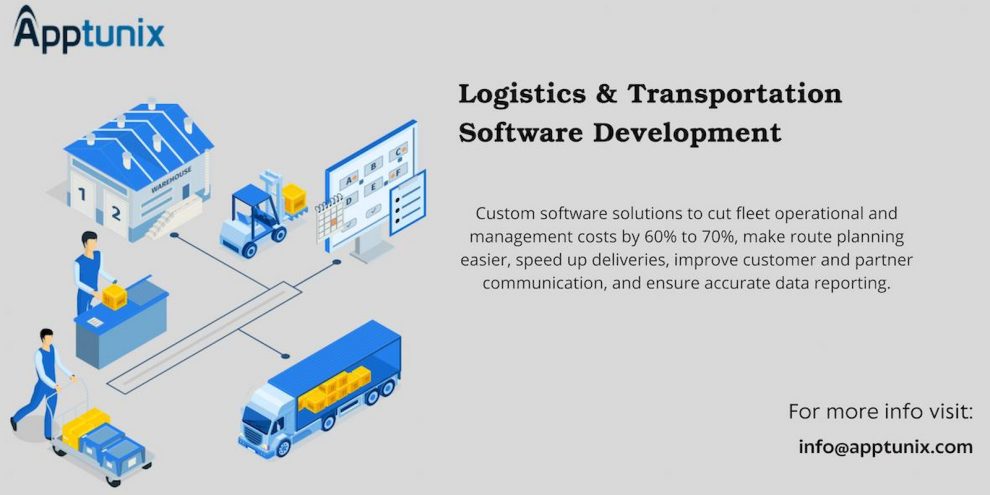The logistics industry is bracing for a major shakeup. It is necessary to transport the history of inefficiencies seen during the pandemic. The heart of supply chain organizations should be flexibility and productivity.
When you add it all up, unlocking automation in the transportation and logistics industry has become the only solution as we enter the new chapter of 2022.
The logistics industry has always played an important role in bridging the gap between different national economies and paving the way for the global cyclic flow of goods. It is the epicenter of global economic prosperity and interconnectedness.
As E-commerce volumes rise, logistics CEOs should prioritize automating freight flows and digitizing every touchpoint of the supply chain in order to efficiently handle a wide range of operations in a cost-effective and agile manner.
In such a fast-paced environment with increasing transportation volumes, logistics and transport management software serves as a critical interface for supply chain managers.
Giving them a simple way to keep track of their shipments, optimise delivery routes, communicate with partners, and oversee distribution in real time.
A leading logistics management software development company, provides an overview of the transport management system market and discusses upcoming technology trends that will reshape logistics management in this article. I hope it provides you with new perspectives and motivates you to pursue technical advancements.
The Logistics Industry’s Major Obstacles and Challenges
Coordination is lacking.
Inconsistency and fragmentation are two major challenges that the logistics industry faces. Multiple parties are involved in the logistics and trucking industry, ranging from manufacturers and storekeepers to carriers, shippers, and end-users, making coordination a time-consuming process.
Without a central control point, monitoring each activity at each touchpoint is a time-consuming process that also lacks the assurance of accuracy. The inefficiency of establishing synchronisation among multiple parties is frequently caused by this open-ended fragmentation
Warehouse Management Mistakes
Another concern for the logistics industry is warehouse management, which involves tracking and managing a large number of goods and cargo. Managing a large amount of cargo could be quite difficult. A single stock error can result in misplaced or lost goods, making warehouse product stacking more important than ever.
Given the risk of human error, businesses prefer to use warehouse management mobile apps with barcode scanners and voice technologies to automate the stacking and loading of products and digitally identify goods.
Internal communication is lacking.
Maintaining smooth internal communication and organisational trust is a major challenge for any company trying to stay afloat in today’s competitive market. The culture of streamlining work processes has a direct impact on employee productivity.
Companies, it appears, lack the creativity to interact with employees or train them to use new tools or technologies to bring about changes in the workplace. As a result, efficiency is reduced, and the strategic vision that organisations look to achieve is divided.
Technology’s Impact on Logistic Software Development
Customer Expectations Fulfilled
Customers’ expectations are rapidly increasing as we move closer to digitalization. They expect goods to be delivered quickly and with ease of tracking. They actually seek order delivery flexibility by changing the shipment location shortly after the product leaves the warehouse.
Thankfully, technological advancements have improved overall supply chain processes, making it easier to complete deliveries in less time and with greater precision.
Tracking a shipment
Customers and businesses alike expect to be able to track their shipments in real time and with pinpoint accuracy. They want an official sneak peek to get a sense of where their product is, when it will be delivered, and if the transit has failed to arrive, among other things.
The logistic tracking software allows businesses to keep customers up to date on the status of their orders via automated in-app notifications, messages, or emails. As a result, they save time and money that would otherwise be spent manually calling customers and informing them of issues.
Monitoring of the Route
A fleet of trucks can use GPS assistance to find the most efficient route without getting lost or experiencing delivery delays thanks to technology. Furthermore, the trucking management feature and flexibility save businesses money on unnecessary fuel and gas costs.
Maintenance of Vehicles
Technology in trucking app development allows logistics companies to use remote predictive maintenance tools to assess the condition of their vehicles. Regardless of fleet size or maintenance requirements, sensor data and equipment monitoring tools assist trucking management companies in tracking their fleet.
Final Thoughts
Technology’s vast potential in logistics functions has been identified as a key building block for achieving business efficiency. Reconstructing your supply chain strategy using the above-mentioned futuristic logistics and trucking app software can help you achieve end-to-end transparency and simplify the supply chain.












Add Comment